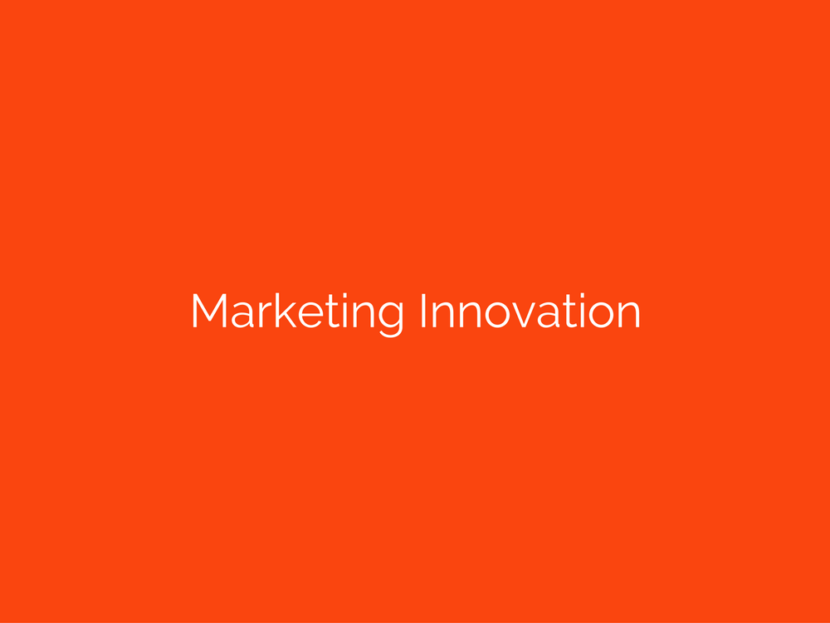The Marketing Innovation Bandwagon
There are few more over used words in business than ‘Innovation’. Today, thanks to Malcolm Turnbull, it has even entered the world of politics and will be at the core of fiscal policies soon. But what is it, why is it important, what is the relationship between marketing / innovation, what can it do, and how can you use it?
Innovation is not a concept owned solely by start-ups, especially not just ‘tech’ start-ups. It’s a word all business should own and embrace.
To understand its position in the lexicon it’s necessary to go back in time. Historically speaking, the word ‘innovation’ is old. I mean 13th century ‘old’. In those days it was used accusatorily, in the same way as ‘heresy’. Innovators were chastised and criticised as meddlers: Peddlers of Change.
‘Change’ altered the status quo, disrupted power balances and was seen as a negative. ‘Loss aversion’ is a fundamental cognitive bias in humans, and human-centered organisations. Church and State did not like change in medieval times.
Even though it met resistance in the form of revolutionary actions from groups such as the Luddites, the tipping point for innovation from ‘unfavourable’ to ‘acceptable’ came during the industrial revolution. Fundamentally, that was because the word assumed a connotation of investment in a better future. Innovation and invention eventually became prestigious because they created wealth. Innovation brought an upgrade to society and inventors like Watt, Brunel, Edison and others became international heroes.
Post Industrial Revolution, into the 20th Century economists began to preach that innovation was important for constructive change in organisations. Innovation came to denote bringing new ideas, new solutions and new technologies to the market.
In 1954, Peter Drucker used the now famous words, “Because the purpose of business is to create a customer, the business enterprise has two–and only two–basic functions: marketing and innovation. Marketing and innovation produce results; all the rest are costs.”
This is still true today, and even more so. Innovation is marketing in many ways. Marketing innovation creates customers.
Marketing is innovation. The words are interchangeable.
Innovation is more often than not a case of ‘re-engineering’: Combining existing ideas, theories, tools or technologies to solve a problem. Marketing is answering a problem with an innovation solution.
Classically, re-engineering is something associated with what an Engineer does.
I looked up the definition of ‘engineer’, and it suffers the same issue that ‘marketing’ does. It’s a noun and a verb.
Engineer (Noun): a person who designs, builds, or maintains engines, machines, or structures
Engineer (Verb): skillfully arrange for (something) to occur.
Marketers design, build and maintain structures (called Brands), and they skillfully arrange for ’results’ to occur.
So for Marketers and Engineers alike, the important keyword is ‘design’.
Herbert A. Simon. He asserts design to be a meta-discipline of all professions:
“Engineers are not the only professional designers. Everyone designs who devises courses of action aimed at changing existing situations into preferred ones. The intellectual activity that produces material artefacts is no different fundamentally from the one that prescribes remedies for a sick patient or the one that devises a new sales plan for a company or a social welfare policy for a state. Design, so construed, is the core of all professional training; it is the principal mark that distinguishes the professions from the sciences. Schools of engineering, as well as schools of architecture, business, education, law, and medicine, are all centrally concerned with the process of design.”
Marketing, Innovation and Design are symbiotic. Design is the key to Innovation. Innovation the key to Marketing. Marketing creates customers.
Design isn’t aesthetic. Design is cultivated.
Steve Jobs said a little more concisely,
“Design is not just what it looks like and feels like. Design is how it works.”
The world’s biggest company has been built on this ethos. So if you ignore design you ignore history and deny the role of design in competitive advantage.
Another of my favourite people (my Twitter friend and) business guru Tom Peters, “The dumbest mistake is viewing design as something you do at the end of the process to ‘tidy up’ the mess, as opposed to understanding it’s a ‘day one’ issue and part of everything.”
A business trying to build sustainable competitive advantage needs to be distinctive.
Design differentiates. Innovation is design.
Innovation is at the core of successful organisations.
That’s how you should view ‘innovation’. And that’s how you should use it.

